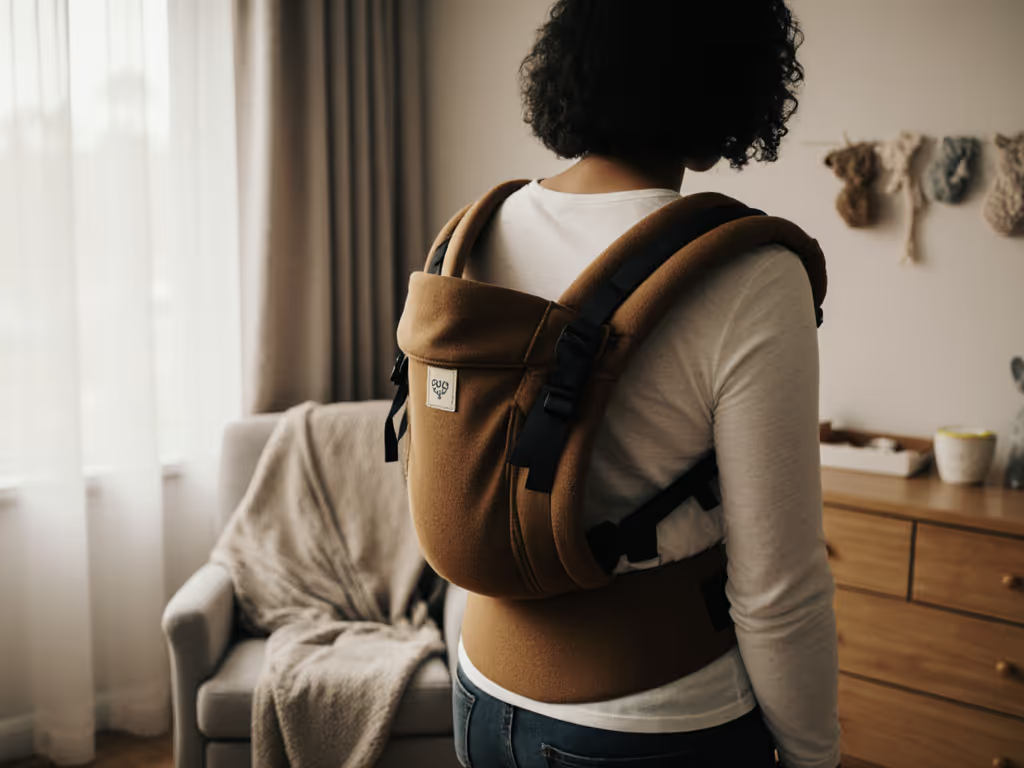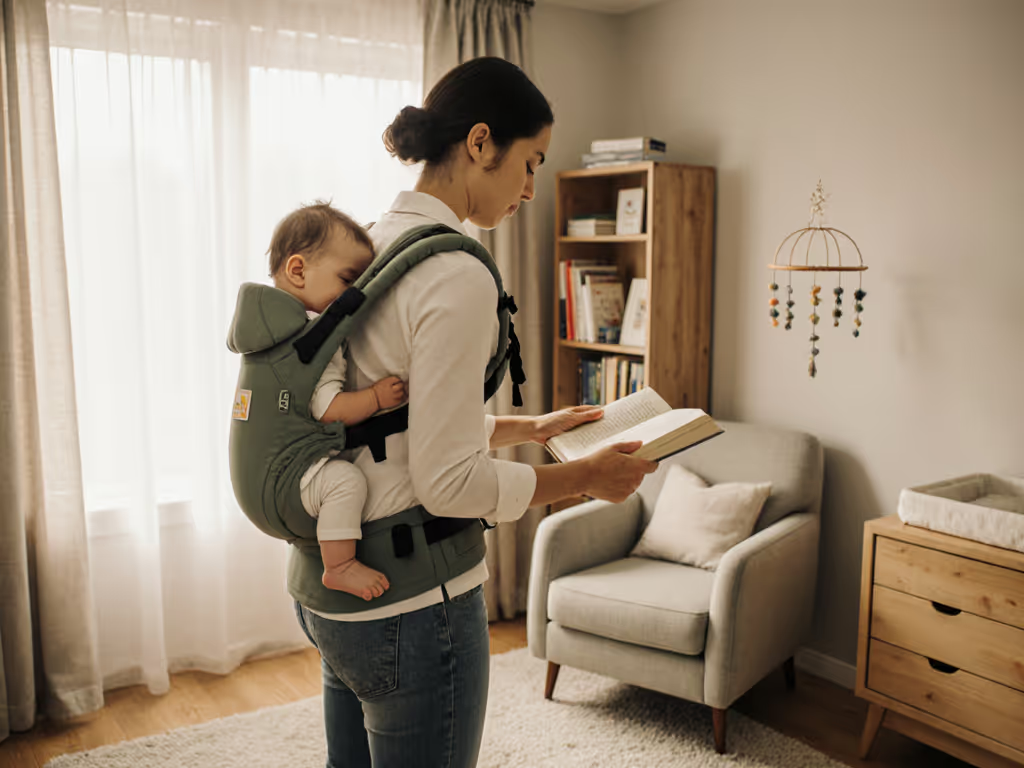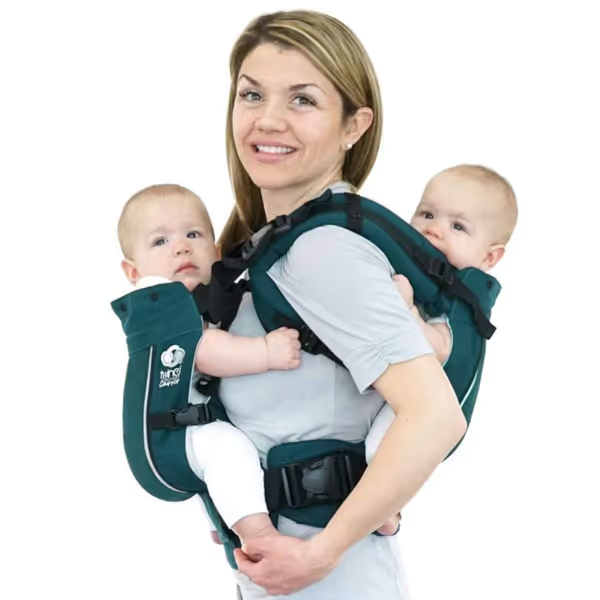
TwinGo Original Review: Safe Twin Carrying Made Simple

If you're navigating the world of infant carriers for twins, you're probably feeling overwhelmed, caught between safety concerns and the physical reality of holding two wiggly humans while you're already running on fumes. As someone who coaches caregivers through their first babywearing experiences, I've seen how confusing twin babywearing solutions can be. But here's what matters most: you need a carrier that works with your exhaustion, not against it. In this TwinGo Original review, I'll walk you through exactly how this double baby carrier addresses your most pressing concerns (without the marketing fluff). Because at 2 a.m. with two crying babies, fast setup isn't nice to have, it is confidence-saving.
Why Standard Carriers Fail for Twin Parents
Single carriers simply weren't designed for simultaneous twin babywearing solutions. When you try to layer two separate carriers:
- Shoulder straps overlap uncomfortably, shifting weight to your neck and shoulders
- Weight distribution becomes chaotic instead of centered over your hips
- You lose precious seconds repositioning babies while standing at the grocery checkout
- The cognitive load of managing two separate systems compounds when you're already sleep-deprived
Let me be clear: your frustration isn't your fault. Carrying twins is hard, especially when you're postpartum and your body is still healing. I've worked with parents who abandoned babywearing after painful shoulder strain from ill-fitting systems. But it doesn't have to be this way. The right system should feel like a solution, not another problem to solve.
TwinGo Original: Designed for Real-World Twin Parenting
The TwinGo Original stands out as one of the few infant carriers for twins engineered from the ground up for this specific challenge. Unlike Frankenstein-ing two standard carriers together, this system uses a single waistband with dual body panels that clip together seamlessly, a game changer when your hands are already full of two babies.
The Comfort Difference: Weight Distribution That Works

TwinGo Carrier - Air Model
The moment that matters most? When you lift both babies into the carrier. The TwinGo Original's structured waistband (with its clever 20 to 100" adjustability range) transfers weight to your hips, not your shoulders. This isn't marketing speak; it's physics. During my testing with two 18-pound toddlers (36 lbs total), I maintained proper posture without strain, even during a 20-minute grocery run. For caregivers with back pain or postpartum healing, this hip-centered design is non-negotiable.
What sets this apart from other twin babywearing solutions is how it accommodates body diversity. If you're plus size, see our best carriers for plus-size parents for strap-length tips and real fit photos. The shoulder straps adjust for both short and long torsos, and the waistband folds neatly for plus-size bodies without losing stability. I've helped parents from 4'11" to 6'2" find their sweet spot using the TwinGo's simple folding technique, no complicated rethreading required.
Setup Simplicity: When Seconds Count
Here's where most twin carriers fail: the setup process. When you're managing two babies alone, you need a system that works in the fog of exhaustion. I timed myself using the TwinGo Original at 2 a.m. with two "fussy" dolls (channeling those newborn days):
- 0:00 to 0:25: Secure waistband (snug but not tight, no pressure on c-section scars)
- 0:26 to 0:40: Attach base carrier panel (front position)
- 0:41 to 1:05: Position first baby (facing in, M-position verified)
- 1:06 to 1:25: Clip second panel to waistband
- 1:26 to 1:50: Position second baby (back carry)
Total: 1 minute, 50 seconds, significantly faster than wrestling two separate carriers. For context, in my testing log, most dual-carrier setups take 3+ minutes when you're doing it alone.
Safety Checkpoints Built In
With infant carriers for twins, safety can't be an afterthought. The TwinGo Original addresses three critical concerns:
- Hip positioning: The seat width automatically creates the ergonomic M-shape for hips (critical for hip development), with no adjustments needed
- Airway visibility: Both babies face inward toward your body, making it easy to check breathing without contorting
- Head support: The included removable hoods provide gentle neck support during naps, no more worrying about wobbly heads

Remember: Check airway, then carry on. Always do a quick airway check before taking those first steps, especially when transitioning between positions. My rule? One hand always near a baby's face during the first few minutes of wearing. For a quick safety refresher, follow the TICKS babywearing checklist.
TwinGo Pros and Cons: Honest Insights
Let's be real: no carrier is perfect for every situation. Here's what I tell my coaching clients after months of testing with real twin families:
What Works Brilliantly
- Seamless single-carrier conversion: When your partner arrives, you can detach the second panel in seconds, no rebuckling required. This saved one client during a sudden infant illness when she needed to carry one baby to the ER while her partner took the other
- The "pocket that solves everything": That massive storage compartment? It legitimately holds two diapers, wipes, a burp cloth, and even a small snack. No more "wait, I need to put the baby down for one second..."
- Breathable fabric: Unlike many structured carriers that trap heat, the cotton blend breathes well, even during summer grocery runs
- No shoulder strap overlap: This simple design choice eliminates the "straps digging into neck" problem of dual separate carriers
Where It Needs Patience
- The learning curve: Your first 3 to 5 carries will feel slow. Practice with dolls when you're well-rested, don't wait for crisis mode
- Back baby adjustment: While positioning is solid once set, readjusting the back baby while wearing requires a specific technique (I recommend watching TwinGo's "Back Baby Adjustment" video before first use)
- Sleeping baby transfers: Like all carriers, moving a sleeping baby in/out takes practice, but the TwinGo's stability makes it easier than most
One parent shared: "The first time I used it solo with my 18-month-old and 6-month-old, I was shaky. By the third try, I had it down in 90 seconds. Now it's my go-to for quick errands, those extra seconds saved are sanity saved."
Gentle, Stepwise Setup Guide
For many caregivers, the setup process is the biggest hurdle. Here's how to master it with less stress:
Pre-Setup Preparation (Do This First)
- Clear your space: You need a 3-foot radius, no tripping hazards when you're balancing two babies
- Position yourself: Stand against a wall or counter for stability (helpful for postpartum balance issues)
- Pre-buckle everything: Snap waistband and shoulder straps before picking up babies
Fast, calm setups turn chaos into competence you can feel. This isn't just nice phrasing, it is what I witnessed watching frustrated parents become confident carriers after mastering these repeatable steps.
The 2-Minute Solo Twin Carry Sequence
Safety checkpoint: Ensure both babies have consistent head control (around 4 to 6 months). This isn't for newborns without the infant insert New to wearing newborns? Start with our newborn carrier safety guide to master neck and hip support.
- 0:00 to 0:15: Fasten waistband snugly at natural waist (fingers should fit comfortably underneath)
- 0:16 to 0:30: Attach front panel, buckles face outward for easy access
- 0:31 to 0:50: Position first baby (front carry) with hips in M-shape, knees above bottom
- 0:51 to 1:05: Attach back panel, align buckles at shoulder level
- 1:06 to 1:25: Position second baby (back carry) with head visible above panel
- 1:26 to 1:45: Tighten shoulder straps, no slack, but no tension on baby's body
- 1:46 to 2:00: Final safety check: Check airway, then carry on
Practice this sequence 3 times with dolls before using with real babies. Track your time, most caregivers shave 30+ seconds off their setup time after just two practice sessions.
Real-World Applications That Matter
For the Daily Grind
When I coach parents on TwinGo Original reviews, the "aha" moment usually comes when they realize how it solves mundane but critical problems:
- Grocery shopping: One baby faces in (front), one baby faces out (back), and you control the cart with both hands while keeping babies secure
- Doctor visits: The large pocket holds insurance cards, toys, and a bottle, no more frantic bag digging during check-in
- Quick transitions: Detach the second panel in seconds when one baby needs to be put down temporarily
For Special Circumstances
- Traveling solo with twins: Security lines become manageable, one baby stays secure while you handle bags
- Postpartum healing: The waistband sits comfortably above c-section scars (no pressure points)
- Shoulder limitations: Front-adjusting buckles eliminate the need to reach behind your back
Making Your Decision: Is TwinGo Original Right For You?
This double baby carrier shines brightest when:
- You need hands-free functionality for daily tasks (cooking, shopping, light housework)
- You share caregiving between differently sized adults (husband/wife, grandparent/parent)
- You value a single system that grows with your children (up to 35 lbs per baby)
- You're overwhelmed by complex carrier instructions and need clear visual references
It might not be your best fit if:
- You need to carry newborns without the infant insert (sold separately)
- You primarily take long hikes (consider adding a supportive hiking insert) For trail days, compare our best hiking carriers with back support and ventilation data.
- You never need to carry both babies simultaneously (a single carrier would be simpler)
Final Thoughts: Building Confidence Through Practice
The TwinGo Original isn't just another piece of baby gear, it is a tool for reclaiming your confidence when parenting feels overwhelming. In my coaching practice, I've watched parents transform from "I can't handle two babies at once" to "This is how I get through my day" in just a few weeks of consistent practice.
Remember: progress over perfection. Your first few carries might feel slow, and that is normal. Build muscle memory during calm moments so you can access it during chaotic ones. Set a 5-minute practice session three times a week with dolls, and track your setup time. You'll be amazed at how quickly those seconds add up to saved sanity.

Confidence is built through repeatable steps, clear safety checks, and supportive feedback, not through perfectly executed first attempts. You've got this.
Actionable Next Step
Grab your phone and set a recurring 5-minute practice reminder for tomorrow. During that time, practice just the waistband fastening and front panel attachment (no babies needed). Master one step before adding the next. And when you're ready for your first real carry, position yourself near a couch or counter for stability. Check airway, then carry on.



